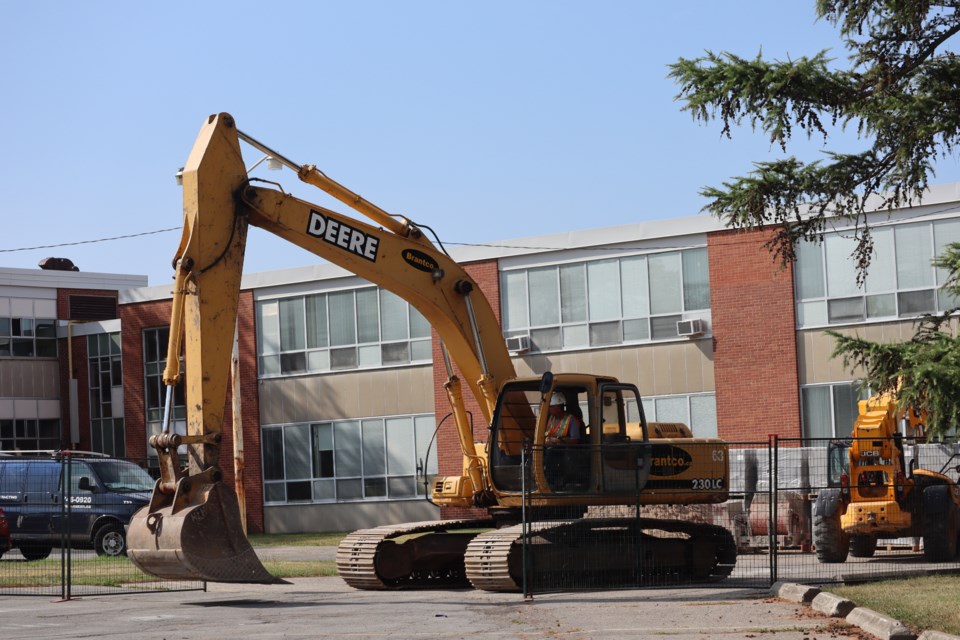Close to 45 per cent of Waterloo region's public schools are below a state of good repair according to a report released Wednesday by the Ontario Financial Accountability Office.
The report from the province's financial watchdog says the condition of 123 schools in the Waterloo Region District School Board average a 79 on the condition index with 55 schools assessed at below a state of good repair (SOGR).
For schools to be considered “below a state of good repair,” it must either require rehabilitation or should be replaced with a new school.
The FAO estimates the number of below SOGR public schools in Waterloo region amount to a $178 million backlog in infrastructure upgrades as of March 31.
The estimated additional cost to bring its schools into a state of good repair through rehabilitation or replacement is pegged at $401 million and as schools continue to age and deteriorate, the FAO estimates the 10-year cost to deal with it will grow to $579 million.
In an emailed statement to CambridgeToday, Chris Sagar, the WRDSB's superintendent of facility services said the board is projected to receive $10.4 million in school renewal funding this year and next.
The WRDSB is also slated to get about $33 million through the Ministry of Education's School Condition Improvement Grant.
Sager said the limited funding means not all prioritized projects can be completed.
He didn't specify what schools are below a state of good repair, but added the board is committed to ensuring school buildings and classrooms are safe, welcoming and supportive spaces.
The report "highlights the scale of the work that lies ahead of us, and school boards across the province," he said, adding the board has invested more than $225 million in upgrading school infrastructure over the last five years.
The province's financial watchdog says the condition of Ontario's school buildings is assessed on a rolling five-year cycle where independent engineers identify building components that need repair or replacement and then quantify the cost to address these issues.
Sager said it’s important to note the data in the FAO report is from the School Facility Condition Assessment Program, which was paused during the pandemic.
"As a result, the data does not reflect the current state of WRDSB schools. The next assessment cycle will begin next year for the WRDSB. Approximately 25-30 schools are assessed each year as part of this process," he said.
Schools in the Waterloo Catholic District School Board (WCDSB) are in considerably better shape according to the FAO assessment.
The average condition of its 48 schools scores a 91 on the condition index and only seven are below a state of good repair. The board's infrastructure backlog is $5 million and the additional cost to maintain its schools is $86 million with a total 10-year cost to manage it pegged at $91 million.
As of March 31, 2024, the FAO estimates that 3,037 schools across the province, 62.6 per cent, were in a state of good repair and 1,813 schools, or 37.4 per cent, were below SOGR.
Of those below SOGR, 1,781 schools required rehabilitation and 32 schools should be replaced.
The 10 largest school boards accounted for 52 per cent of all buildings below SOGR.
Of the top 10 school boards, the Toronto District School Board (DSB) had the highest share of buildings below SOGR at 84.1 per cent, followed by the Thames Valley DSB at 52.5 per cent, and then the Toronto Catholic DSB at 45.6 per cent.
The WRDSB comes in just under that with 44.7 per cent of its schools below SOGR.
The FAO estimates the current cost to bring all school buildings into a state of good repair, also referred to as the infrastructure backlog, is $6.5 billion.
The report estimates, over the next 10 years, the province will need to spend an additional $15.2 billion to maintain school buildings in a state of good repair.
School capacity
Student capacity is also measured in the study and that's where both of the region's school boards will be challenged over the next decade.
The WRDSB has current enrolment of 67,112 and will need to create 7,804 new spaces over the next 10 years.
About 39 per cent of the region's public schools are overcapacity now with the total cost to build new schools to accommodate growth estimated at $445 million through 2034.
Of the 10 largest school boards in the province, the Durham DSB had the highest proportion of overcapacity schools, with 69.2 per cent of schools operating above 100 per cent utilization.
At the Catholic board, the situation is worse with current enrolment at 26,382 students and only enough space for 22,622.
It's estimated that the cost to build new schools to accommodate enrolment projections for more than 10,000 new students by 2034 will cost the region's Catholic board $551 million.
The FAO estimates that to create 172,187 new school spaces, the province would need to build the equivalent of 227 new schools at a cost of $9.8 billion over 10 years.
This includes $6.2 billion for the English public system, $3.2 billion for the English Catholic system, $113 million for the French public system, and $219 million for the French Catholic system.
The WCDSB was not able to provide a comment on the report's findings.



